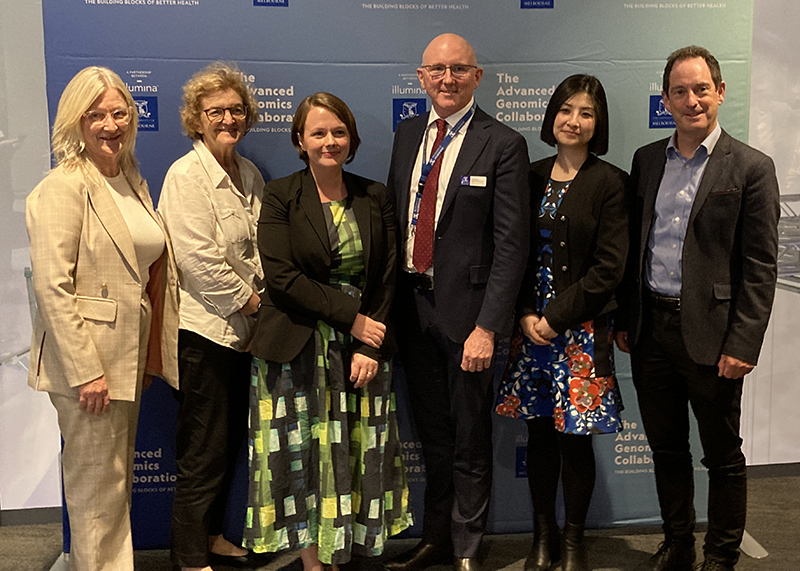This website uses cookies so that we can provide you with the best user experience possible. Cookie information is stored in your browser and performs functions such as recognising you when you return to our website and helping our team to understand which sections of the website you find most interesting and useful.
Research
Finding answers to unknown IRDs
A new project is using cutting-edge DNA sequencing technology to find the genetic cause of not-yet-understood inherited retinal diseases.
New funding is supporting researchers from CERA and The University of Melbourne to find answers for the 40 per cent of people who are diagnosed with inherited retinal diseases (IRDs), but do not have a genetic diagnosis.
Their work has the potential to find targets for breakthrough treatments and help people access future clinical trials.
The Advanced Genomics Collaboration (TAGC) – a partnership between Illumina and The University of Melbourne – is supporting a team led by Associate Professor Lauren Ayton and Dr Ceecee Britten-Jones to access cutting-edge DNA sequencing technology to look for answers.
“Until quite recently there were no treatments at all for inherited retinal diseases, so all we could offer people would be things like canes, guide dogs and extra mobility training,” says Associate Professor Ayton.
“Now we are actually at the precipice of a whole raft of new treatments, and with TAGC support we’re now going to be able to learn more about these people and their genetic differences, hopefully target new treatment options and identify people who could go into clinical trials.”
Genetic discoveries
IRDs, which include conditions like retinitis pigmentosa and Stargardt disease, are caused by a change or mistake in one or more of a person’s genes.
Together they are the most common form of blindness among working-age Australians.
While the genes that cause a number of IRDs have been identified, there are still many where the exact genes that cause the condition have not yet been found.
Finding the gene that cause these conditions means that scientists can start work on potential therapies.
“Genomics is transforming healthcare. It’s revolutionising our ability to be able to understand the causes of different diseases,” says Dr Ceecee Britten-Jones.
“For the inherited diseases we work with, its helps give us information about family planning, but also gives those affected the ability to understand what is causing their conditions – and that knowledge is powerful.”
While the genetic source of a number of IRDs have been identified, 40 per cent of people who are diagnosed with an IRD still cannot be told the precise genetic cause.
The support from TAGC will allow them to access a world-leading genomics hub to build a comprehensive genetic database of these IRDs and drive towards new treatments and clinical trials.

Working together
This project complements the work of the VENTURE study, which is helping people with better understood IRDs access research opportunities as well as clinical trials.
Associate Professor Ayton says this work is important for the wave of new and emerging treatments for these conditions.
“It’s quite amazing to see how quickly this field has changed from where we were 10 or 15 years ago,” says Associate Professor Ayton.
“The fact that we can now look at somebody’s whole genetic information and have that explain what they’re experiencing is just mindboggling.”
TAGC is a partnership between the University of Melbourne and global biotech company Illumina.
Funding for the 2024 TAGC Innovation Projects has been made possible with the support of Invest Victoria.

